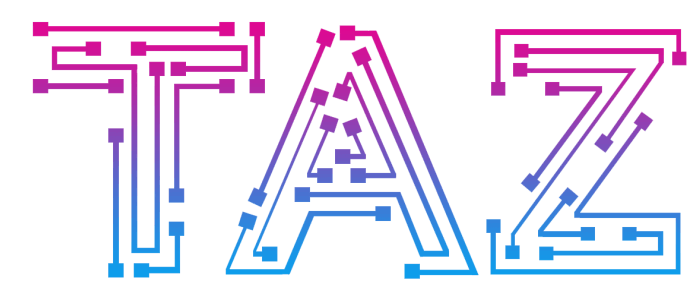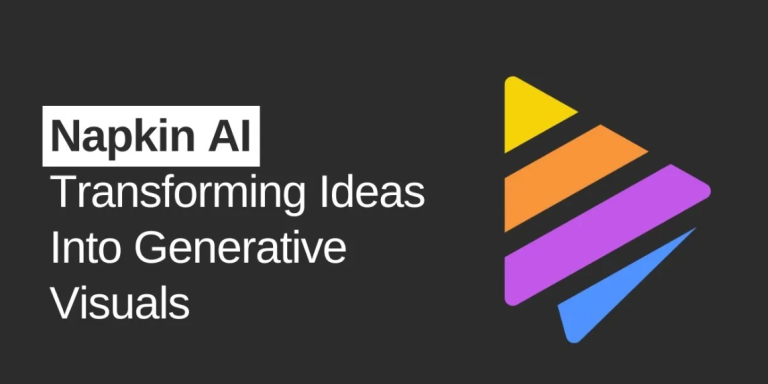Last updated: May 2025
Introduction
AI-powered coding tools have revolutionized software development, dramatically increasing productivity through intelligent code generation, real-time assistance, and automated testing. In 2025, these tools have evolved beyond simple autocompletion to become sophisticated coding partners that understand complex requirements, suggest architectural improvements, and even identify potential security vulnerabilities before deployment. This ranking evaluates the best AI coding tools available today, assessing their capabilities, language support, and integration with modern development workflows.
Evaluation Criteria
- Code Generation Quality: Accuracy, efficiency, and readability of generated code
- Contextual Understanding: Ability to comprehend project structure and requirements
- Programming Language Support: Range of languages and frameworks covered
- Integration Capabilities: Compatibility with IDEs, repositories, and CI/CD pipelines
- Learning & Adaptation: How the tool improves based on user feedback and coding patterns
- Documentation Generation: Quality of auto-generated documentation
- Testing Assistance: Capabilities for test generation and bug identification
- Security Analysis: Detection of vulnerabilities and code quality issues
- Performance Impact: Resource usage and speed of suggestions
- Pricing Structure: Value relative to features offered
Top AI Coding Tools
1. Cursor
Strengths:
- Exceptional IDE integration with powerful Claude 3.7 thinking capabilities
- Superior comprehension of entire codebases with advanced context understanding
- Exceptional at complex refactoring and architectural suggestions
- Seamless version control integration and collaboration features
- Highly accurate code generation across multiple languages
Weaknesses:
- Higher resource requirements for optimal performance
- Premium features require subscription
Pricing:
- Free tier with basic functionality
- Pro: $20/month with full feature access
- Enterprise: Custom pricing with additional security features
Best For:
- Professional developers working on complex projects
- Teams requiring sophisticated architectural assistance
- Developers who prefer a dedicated coding environment
2. Augment
Strengths:
- Excellent VS Code integration with minimal configuration
- Advanced context-aware completions and suggestions
- Strong documentation generation capabilities
- Lightweight extension with minimal performance impact
- Excellent at preserving developer coding style
Weaknesses:
- Limited to VS Code environment
- Occasional latency with very large codebases
Pricing:
- Free tier with generous usage limits
- Professional: $15/month
- Team plans starting at $12/user/month
Best For:
- VS Code enthusiasts and web developers
- Small to medium development teams
- Developers prioritizing a lightweight solution
3. Gemini 2.5 Pro
Strengths:
- Exceptional multimodal capabilities for understanding diagrams and images
- Excellent at explaining complex code and algorithms
- Multiple integration options (including IDE plugins and API)
- Strong performance with Google Cloud technologies
- Advanced code optimization suggestions
Weaknesses:
- Requires more specific prompting for optimal results
- Integration not as seamless as dedicated IDE solutions
Pricing:
- Free tier available with usage limits
- Pro: $19.99/month for increased limits and features
- Enterprise: Custom pricing with enhanced security
Best For:
- Full-stack developers working with visual components
- Teams using Google Cloud infrastructure
- Developers who need to understand legacy codebases
4. Cline
Strengths:
- Excellent VS Code integration with minimal setup
- Superior natural language understanding for requirements
- Transparent API usage with cost optimization features
- Strong at generating tests and security analysis
Weaknesses:
- API costs can accumulate for heavy usage
- Limited support for some specialized frameworks
Pricing:
- Usage-based pricing starting at $10/month
- Professional plan: $25/month with higher limits
- Enterprise options with dedicated support
Best For:
- Cost-conscious developers needing flexible usage
- Teams requiring detailed usage analytics
- Projects with specific security compliance requirements
5. Roo Code
Strengths:
- Excellent VS Code extension with focus on readability
- Strong API cost management features
- Specialized in refactoring legacy codebases
- Excellent at generating thorough documentation
Weaknesses:
- More limited language support than top competitors
- Integration limited primarily to VS Code
Pricing:
- Free tier with basic features
- Premium: $12/month for advanced capabilities
- Team: $10/user/month (minimum 5 users)
Best For:
- Documentation-focused teams
- Developers working on modernizing legacy systems
- Cost-conscious development teams
Free Model Options
For developers looking for no-cost solutions, these models offer strong capabilities through various platforms:
- Google Gemini 2.0 Flash: Excellent free model available via API and Colab
- Google Gemini 2.5 Pro Experimental: Periodically available for free testing with advanced capabilities
- Meta Llama-4-Scout: Free open-source model with strong coding capabilities
- Meta Llama-4-Maverick: Free model with excellent problem-solving abilities
- DeepSeek V3 Base: Specialized free model for coding tasks
- DeepSeek Chat V3: Conversational model with coding expertise
- Qwen 2.5 VL-72B: Free model with multimodal capabilities
- Agentica DeepCoder-14B: Specialized for programming tasks
Programming Language Support
The most advanced AI coding assistants in 2025 offer exceptional support across multiple languages:
Python
Java
C#
Go
Rust
Ruby
PHP
Kotlin
Swift
C/C++
SQL
Leading tools also support domain-specific languages and frameworks such as:
Angular
Vue
Django
Flask
Spring
TensorFlow
PyTorch
Docker
Kubernetes
AI Coding Capabilities Comparison
| Feature | 2020 Tools | 2023 Tools | 2025 Tools |
|---|---|---|---|
| Code Completion | Single line | Multiple lines | Entire functions and components |
| Context Window | Current file only | Related project files | Entire codebases with dependency graphs |
| Error Handling | Basic syntax fixes | Logic error detection | Predictive error prevention |
| Documentation | Comment completion | Function documentation | Comprehensive docs with examples |
| Refactoring | Variable renaming | Function extraction | Architecture optimization |
| Testing | Basic unit tests | Test cases from code | Comprehensive test suite generation |
Advanced Features in 2025
Today’s top AI coding tools offer capabilities that were nearly unimaginable just a few years ago:
- Natural Language to Code: Converting detailed requirements written in plain language into working, production-ready code
- Codebase Analysis: Identifying architectural patterns, dependencies, and potential improvements across entire projects
- Code Explanation: Generating comprehensive explanations of complex code sections in natural language
- Intelligent Refactoring: Suggesting structural improvements that enhance maintainability and performance
- Security Vulnerability Detection: Proactively identifying potential security issues with detailed remediation suggestions
- Adaptive Learning: Personalizing suggestions based on a developer’s coding style and preferences
// Prompt: “Create a function that takes an array of objects with ‘name’ and ‘age’ properties,
// filters out anyone under 18, sorts by age descending, and returns an array of names.”function filterAndSortAdults(people) {
return people
.filter(person => person.age >= 18)
.sort((a, b) => b.age – a.age)
.map(person => person.name);
}
Modern AI-Assisted Development Workflow
The most effective developers in 2025 follow this approach when working with AI coding tools:
- Requirements Definition: Clearly articulate feature requirements, often in natural language
- Architecture Generation: Use AI to propose overall structure and component relationships
- Iterative Implementation: Leverage AI for code generation while providing feedback on outputs
- Test Creation: Generate comprehensive test suites with edge cases
- Security & Performance Review: Use AI analysis to identify vulnerabilities and optimization opportunities
- Documentation: Automatically document code with examples and usage notes
This collaborative approach combines human creativity and domain knowledge with AI’s code generation capabilities and pattern recognition strengths.
Integration Ecosystem
Top AI coding tools integrate with popular development environments and platforms:
- IDEs: Visual Studio Code, JetBrains Suite, Visual Studio, Xcode
- Version Control: GitHub, GitLab, Bitbucket with PR analysis
- CI/CD: Jenkins, GitHub Actions, CircleCI, Travis CI
- Project Management: Jira, Asana, Linear, GitHub Projects
- Code Quality: SonarQube, ESLint, Black, Checkstyle
- Documentation: Confluence, Notion, GitHub Wiki
Conclusion
AI coding tools have become indispensable for developers in 2025, dramatically increasing productivity while improving code quality and security. The best solutions combine powerful code generation capabilities with deep project understanding and seamless workflow integration. When selecting an AI coding assistant, consider your team’s specific language requirements, development environment, security needs, and how the tool will complement your existing processes. The ideal solution will serve as a collaborative partner that enhances your developers’ capabilities rather than attempting to replace their expertise.
FAQs
Q: Can AI coding tools generate complete applications from scratch?
A: Yes, in 2025, leading AI coding tools can generate functional applications from high-level requirements, though the complexity and quality vary. These tools excel at creating standard applications following common patterns (e.g., CRUD applications, simple web services, data processing scripts). However, applications with unique business logic, complex algorithms, or specialized requirements typically require human refinement and oversight. The most effective approach is collaborative, where developers define architecture and critical components while using AI to accelerate implementation of standard patterns.
Q: How do these tools handle proprietary or company-specific code patterns?
A: Modern AI coding tools have significantly improved their ability to adapt to proprietary patterns through several mechanisms: 1) Local fine-tuning on company repositories to learn organization-specific patterns and conventions; 2) Project-level context understanding, allowing the AI to recognize and apply patterns found elsewhere in the codebase; 3) Explicit customization through configuration files defining naming conventions, architectural preferences, and style guides; and 4) Adaptive learning from developer feedback, helping the AI adjust suggestions based on accepted and rejected completions. Enterprise versions of leading tools typically offer enhanced capabilities for preserving proprietary patterns and security measures for protecting sensitive code.
Q: What security considerations should teams be aware of when using AI coding assistants?
A: When using AI coding assistants, teams should consider several security aspects: 1) Data privacy – ensure your code isn’t being used to train models without consent; 2) Code quality – verify AI-generated code for security vulnerabilities, as AI may occasionally introduce subtle security issues; 3) API key management – properly secure credentials for accessing AI services; 4) Dependency security – verify suggested packages and libraries are from trusted sources; 5) Authorization controls – restrict sensitive codebases from being shared with external AI services; and 6) Compliance requirements – ensure AI usage meets regulatory standards for your industry. Most enterprise-grade tools now offer private deployment options, end-to-end encryption, and SOC 2 compliance to address these concerns.
Disclaimer: Rankings are based on market research, user reviews, and expert analysis as of May 2025. Prices and features may have changed since publication.





